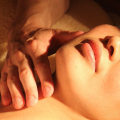Preparing for massage therapy involves more than just showing up at your appointment—it’s about setting the stage for a deeply restorative experience that supports both physical and mental well-being. Whether you’re getting a massage for stress relief, muscle recovery, or to manage chronic pain, proper preparation can greatly enhance the benefits of your session. One of the first things to consider is hydration. Drinking plenty of water in the hours leading up to your massage helps prepare your muscles by keeping them supple and flushes out toxins that may be released during the treatment. Avoid consuming heavy meals or caffeine shortly before your appointment, as digestion and stimulant effects can interfere with the body’s ability to fully relax. Instead, opt for a light snack if needed, and try to arrive with an empty stomach and a calm mind. Equally important is your mental state; taking a few moments to breathe deeply, disconnect from technology, and center yourself can put you in the right mindset to receive the full therapeutic value of the massage.
Communicating With Your Therapist
Open communication with your massage therapist is key to a successful session. Before the massage begins, you’ll usually be asked to complete an intake form or have a brief consultation. This is the time to be honest about any health conditions, areas of pain or discomfort, medications you're taking, and what you hope to achieve from the massage. If you’re dealing with a specific issue like sciatica, for example, letting your therapist know ahead of time can allow them to tailor techniques that gently address the sciatic nerve without causing further irritation. Sharing such details ensures the therapist can adjust pressure, focus areas, and even select the most beneficial massage modality for your needs. If at any point during the massage something doesn’t feel right—whether it’s pain, discomfort, or even just a preference for lighter or firmer pressure—it’s perfectly acceptable and encouraged to speak up. Massage therapy is a collaborative experience, and your input helps shape a session that’s safe and satisfying.
Setting Expectations and Knowing What to Wear
Knowing what to expect can also help you feel more comfortable, especially if it’s your first massage. Most sessions take place in a tranquil setting with soft lighting, calming music, and a warm massage table. You'll typically be asked to undress to your comfort level, but you’ll always be properly draped with a sheet or towel, exposing only the area being worked on. If you’re unsure about how much to undress, just ask—the therapist is there to help you feel at ease. Wear loose-fitting clothes to your appointment so you can slip out of them easily and feel relaxed afterward. You might feel a bit groggy post-massage, especially if it was a deep tissue or therapeutic session, so having comfortable attire helps extend the feeling of calm.
Aftercare and Integration
What you do after a massage is just as important as how you prepare. Give yourself time to rest or ease back into your day slowly. If possible, avoid intense physical activity or stressful situations immediately following the session. Drinking water is again recommended to assist with flushing out any metabolic waste released during the treatment. Some clients experience mild soreness the next day, especially after a deep tissue massage, which is a normal response as the muscles adapt and heal. Gentle stretching, warm baths, or using a heating pad can help ease any discomfort. Reflecting on how your body feels post-massage can also provide insight for future sessions—what worked well, what areas still feel tense, and what adjustments might be beneficial next time. Over time, regular massage therapy can become a key part of your wellness routine, supporting better posture, reduced pain, and improved emotional resilience. By approaching it with mindfulness and intention, each session becomes more than just a physical treatment—it becomes a step toward holistic healing and balance.











